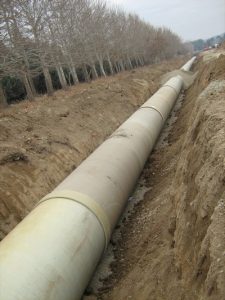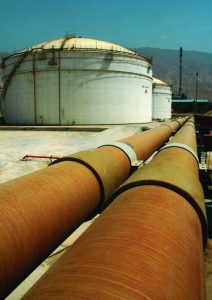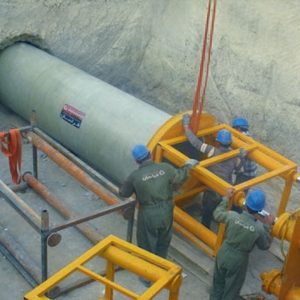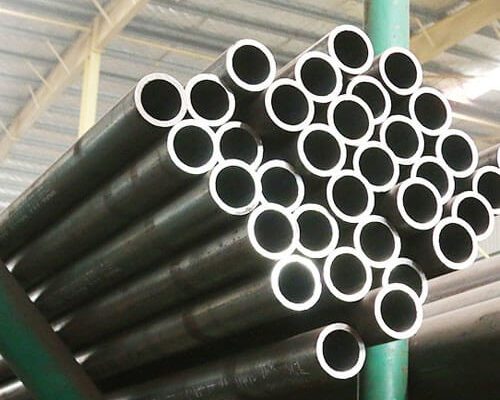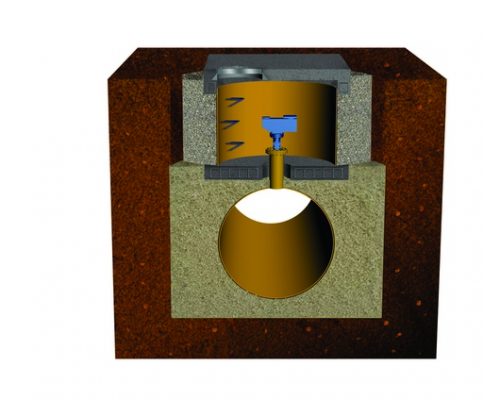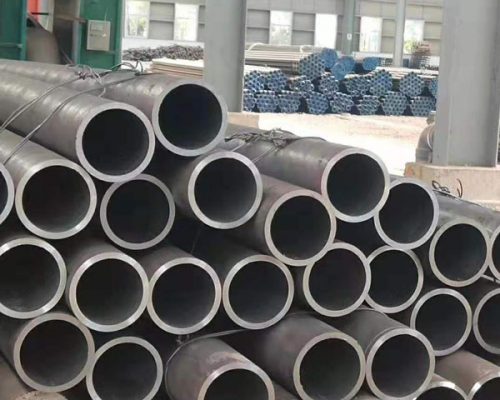Description
Aforementioned types of FRP pipes can be classified and manufactured as follows:
1–Uni-Axial Pipes
Well known generation of FRP pipe is the first generation of its kind, which is so called Uni-Axial pipe, and is most suitable pipe for underground installation. The main reason for naming them Uni-Axial is requirement of detailed installation (bedding, initial backfilling and final backfilling) ensuring to form a soil-pipe mechanism. Uni-Axial pipes although having a great and strong hoop performance against external and internal load in pipe structure, resisting and transferring thrust forces and stresses at joints requires adequate support which normally and traditionally provided by concrete structures called thrust blocks. Thrust blocks are designed according to pipeline’s internal pressure to fulfill requirements of whole pipeline to stand both external and internal loads such as traffic loads and water hammer loads respectively. However, there are practiced ways and options to optimize project’s budget and time by using Uni-Axial pipes in combination with the following class of pipes to eliminate concrete works while having proper outcome. In brief, Uni-Axial or first generation of FRP pipes are designed and manufactured:
- To resist both external and internal loads using soil-pipe mechanism
- For all underground installation purposes including fluid transmission and energy tunnels,
- As the most economically optimized pipes
- And used with flexible jointing system
2–Bi-Axial Pipe
Increasing demands for industrial use of FRP pipes through its inevitable beneficial properties such as light weight, and environmental resistance, erosion and corrosion freeness, mostly maintenance free and etc. brought Faratec™ a challenging task of designing second FRP pipe generation that not only needs to have all tailoring properties and good performance under internal and external load but also is supposed to be installed over ground. This means new demands are toward FRP pipe that shall stand all loads with no support from soil-pipe mechanism. In other words, requirement was to create a semi-steel pipe in terms of mechanical properties with entire advantageous properties of FRP pipe. FRP pipe came up with Bi-Axial pipe that provides mechanical properties off our times higher than steel pipe in hoop direction and mostly similar strength in axial direction. This class of FRP pipe is most suitable for complex industrial purposes. Not specific requirement for soil condition has made this class of pipe suitable for underground installation where the surrounding soil is very poor in bearing capacity or muddy, swampy and weak soil or even where ever traffic loads become more than Uni-Axial pipe capacity. Summarizing Bi-Axial FRP pipes of specification, this class of pipe is designed and manufactured:
- For both underground and aboveground installation
- To resist impact loads such as water hammer and vacuum
- And used with fixed/rigid jointing systems
3– Jacking Pipe
A class of prefabricated pipe has developed that specifically designed to be installed using hydraulic jacks for trenchless applications; suitable for pipelines which are to be installed in a busy road with no possibility of open-trench installation, or places that pipeline crosses railway, highways, existing water channels, structures’ foundation and etc. Unlike other jacking pipes, Jacking Pipes works as transmitting pipe and resist any soil condition while other jacking pipe materials requires a separate sleeve.
In brief Jacking Pipes are designed and manufactured:
- In pressure classes of 1 to 32 bars, upper pressure classes are available upon request
- In diameter ranges of 25 to 3000 millimeters
- In stiffness classes of 25000 to over 200000 Pa
- Working temperature of 160 dg of centigrade
- To be jacked by force of up to 700 tones.
- To resist impact loads such as water hammer and vacuum
- Trenchless application
- And used with flexible and fixed jointing systems
4– Anti UV – Pipe
Although the radiation wavelength of sun ray has no effect on the overall mechanical properties of GRP pipes, the use of Anti UV pipes is recommended, when pipes are exposed to sun-rays for prolonged period of time (above ground installation or when the pipes are stored outdoor before installed).
5– Abrasion Resistant – Pipe
Suspended particles in fluids have always been one of clients’ concerns because particles, which unavoidably are to be carried by fluids through pipelines, can damage pipes, which severely effects whole pipeline performance during operation period. Pipe’s inner face erosion results local failures and so increases maintenance cost and also by reducing inner wall smoothness imposes a massive change in hydraulic properties of fluid inside the pipeline that cause unwanted and unexpected forces to all pipeline facilities such as pumps. All these damages reduce the entire project’s life expectancy. To solve issues rose by suspended particles in pipelines introduces Abrasion free pipes, which resist erosive particles in fluid. This class of pipe designed for mine industry and also can be used for other purposes.
| Features | Benefits | |
| Corrosion Resistant Materials | Long effective service life | |
| No need for linings, coatings , cathodic protection , wraps or other forms of corrosion protection | ||
| Low maintenance cost | ||
| Hydraulic characteristics essentially constant over time | ||
| Service life of 50 years | Maximum economical optimization | |
| Lightweight (1/4 Weight of Ductile Iron,1/10 Weight of Concrete Pipes) | Low transport costs | |
| Eliminates need for expensive pipe handing equipment | ||
| Long Standard Lengths (6 and 12 meters) | Fewer joints reduces installation time | |
| More pipe per transport vehicle means lower delivery cost | ||
| Smooth inner surface | Low friction loss means less pumping energy needed and lower operating cost | |
| Minimum build-up slime can need lower cleaning costs | ||
| Precision Couplings with Elastomeric Gaskets for under ground applications | Tight, efficient joints designed to eliminate infiltration and exfiltration | |
| Adhesive bonded couplings for above ground applications | Ease of joining, reduces installation time | |
| Accommodates small changes in line direction without fittings or differential settlement | ||
| Trust resistant joints | ||
| Flexible manufacturing process | Custom diameters can be manufactured to provide maximum flow volumes with ease of installation for rehabilitation lining projects | |
| Advanced Technology Pipe Design | Lower wave celerity than other piping materials can mean less cost while designing surge and water hammer pressures | |
| Producing Pipe in accordance with performance standards AWWA, ASTM, DIN, etc. | High fixed quality product in a world-wide scales that ensures reliable product performance | |
| Restrained joining systems | No thrust blocks | |
| Low installation cost | ||


